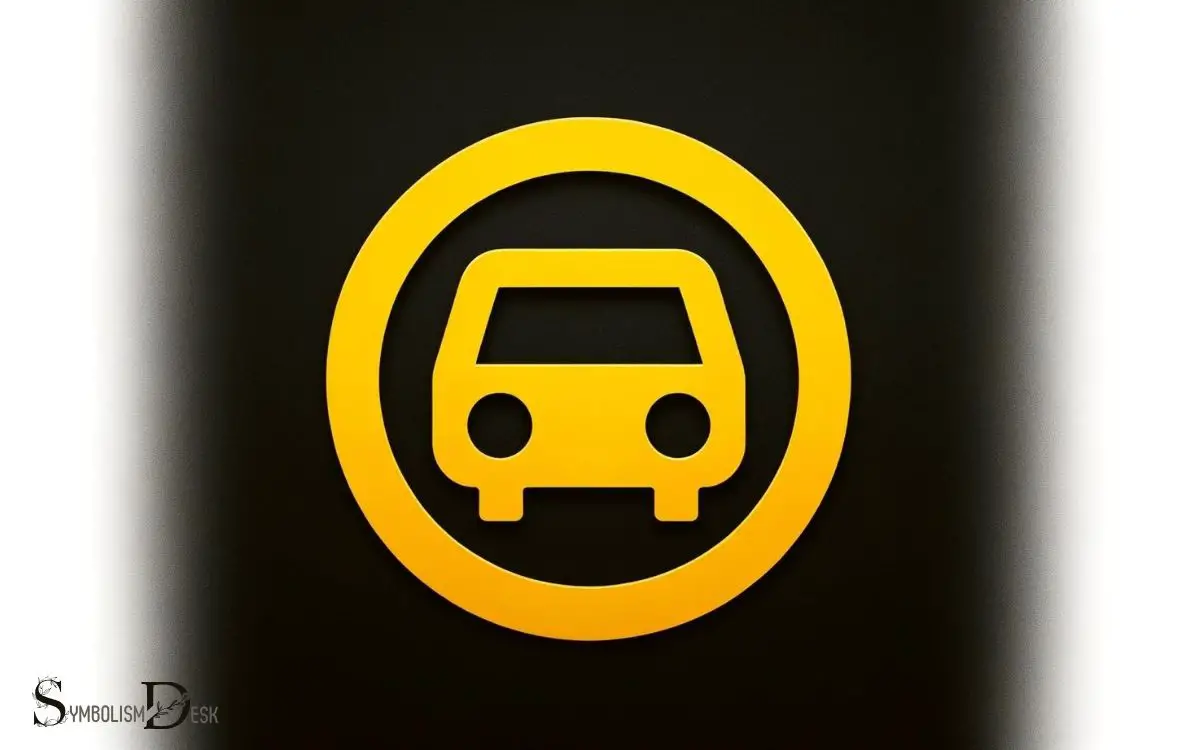What Does Yellow Symbol Mean in Car? Warning!
When a yellow symbol illuminates on a car’s dashboard, it typically indicates a warning or caution.
These symbols often refer to maintenance issues or non-critical problems with the vehicle, such as low washer fluid, the need for an oil change, or a minor malfunction with the engine or a vehicle system.
While not as urgent as red indicators, yellow or amber lights should not be ignored and the vehicle should be inspected and serviced as soon as possible to prevent further damage.
Yellow or amber warning lights on a car’s dashboard are designed to alert the driver about the various issues that need attention but are not immediate safety threats.
Understanding these symbols is crucial for maintaining the health of your vehicle and ensuring safe driving conditions.
Here are some common yellow symbols and their meanings:
Attend to yellow dashboard symbols promptly to ensure your vehicle continues to operate efficiently and safely, preserving its longevity and performance.

Key Takeaway
Check Engine Light
The check engine light indicates a potential issue with the vehicle’s engine or emissions system. When this light comes on, it’s essential to address it promptly. While it can be triggered by something as simple as a loose gas cap, it can also signal more serious problems.
To determine the cause, a diagnostic scan tool can be connected to the vehicle’s onboard computer. This tool retrieves a set of diagnostic trouble codes that provide insight into the issue.
It’s important not to ignore the check engine light, as doing so could lead to further damage or decreased fuel efficiency. By promptly addressing the underlying problem, drivers can prevent potential costly repairs and keep their vehicles running smoothly.
Low Tire Pressure
Indicating insufficient air pressure in the tires, the yellow symbol on the dashboard alerts drivers to low tire pressure. This warning is crucial for maintaining safe driving conditions and preventing potential tire damage.
To address this issue, drivers should take the following steps:
- Check tire pressure regularly using a pressure gauge to ensure it meets the manufacturer’s recommended levels.
- Inflate the tires to the appropriate pressure if they are low.
- Inspect the tires for any signs of damage or punctures that could be causing the low pressure.
Engine Temperature Warning
Monitoring the vehicle’s temperature is crucial for preventing potential engine damage and ensuring safe operation. When the engine temperature warning light illuminates, it indicates that the engine is running too hot, which can lead to severe damage if not addressed promptly.
Here’s a breakdown of the possible causes and actions to take:
| Possible Causes | Actions to Take |
|---|---|
| Low Coolant Levels | Add coolant as soon as possible. Check for leaks. |
| Faulty Thermostat | Have the thermostat inspected and replaced if necessary. |
| Malfunctioning Radiator Fan | Check the fan motor and replace if needed. |
| Water Pump Issues | Have the water pump inspected and repaired. |
| Engine Overload | Reduce speed and load, pull over and let the engine cool down. |
Understanding these potential causes can help drivers respond appropriately to the engine temperature warning, ensuring the safety and health of their vehicle. Next, let’s delve into the ‘oil pressure warning’.
Oil Pressure Warning
When a yellow oil pressure warning light appears on the dashboard, it indicates a potential issue with the engine’s lubrication system. This warning light is crucial, as it signifies that the oil pressure is too low, which can lead to serious engine damage if not addressed promptly.
Here are three essential things to consider when this warning light comes on:
- Pull Over Safely: It’s important to pull over to a safe location as soon as possible when the oil pressure warning light illuminates. Continuing to drive with low oil pressure can cause significant harm to the engine.
- Check Oil Level: After safely stopping, the driver should check the engine oil level. If it’s low, topping it up may resolve the issue. However, if the oil level is adequate, there may be a more serious problem causing the low oil pressure.
- Seek Professional Help: If the warning light persists even after checking the oil level, it’s crucial to seek professional assistance. A qualified mechanic can diagnose and address the underlying problem, preventing potential engine damage.
Battery Alert
The battery alert light typically illuminates intermittently when the vehicle’s battery is not charging properly.
This could indicate an issue with the alternator or the charging system. When this light comes on, it’s essential to address the problem promptly as driving with a failing charging system can lead to the vehicle stalling.
If the battery alert light comes on while driving, it’s recommended to turn off any unnecessary electrical loads such as the radio or air conditioning, and head to a safe location as soon as possible.
Ignoring the battery alert light could result in the vehicle shutting down unexpectedly, leaving the driver stranded. Therefore, it’s crucial to have the charging system and battery inspected by a qualified mechanic when this light appears.
ABS Warning
The ABS warning light, which indicates a potential issue with the anti-lock braking system, illuminates when the system detects a malfunction. When this light comes on, it is essential to address the problem promptly to ensure the proper functioning of the braking system.
Here are three common causes of the ABS warning light:
- Faulty Wheel Speed Sensors: These sensors monitor the speed of each wheel and are crucial for the proper functioning of the ABS. If they malfunction, the ABS warning light may illuminate.
- Low Brake Fluid Level: A low brake fluid level can trigger the ABS warning light. It is important to check the brake fluid level and top it up if necessary.
- Blown Fuse: A blown fuse in the ABS system can also cause the warning light to come on. Checking and replacing the fuse may resolve the issue.
Conclusion
The yellow symbol in a car acts like a helpful friend, warning you of potential issues like a watchful guardian. It lights up to grab your attention, ensuring you don’t miss any warnings that could affect your vehicle’s performance or security. For example, the yellow car lock symbol meaning may indicate a problem with your car’s security system or that a door isn’t securely locked. By addressing such alerts promptly, you can keep your car running smoothly and stay out of harm’s way.
It’s important to pay attention to these signals and address any underlying problems to keep your car running smoothly and safely. So, next time you see that yellow symbol light up, think of it as your car’s way of looking out for you.






